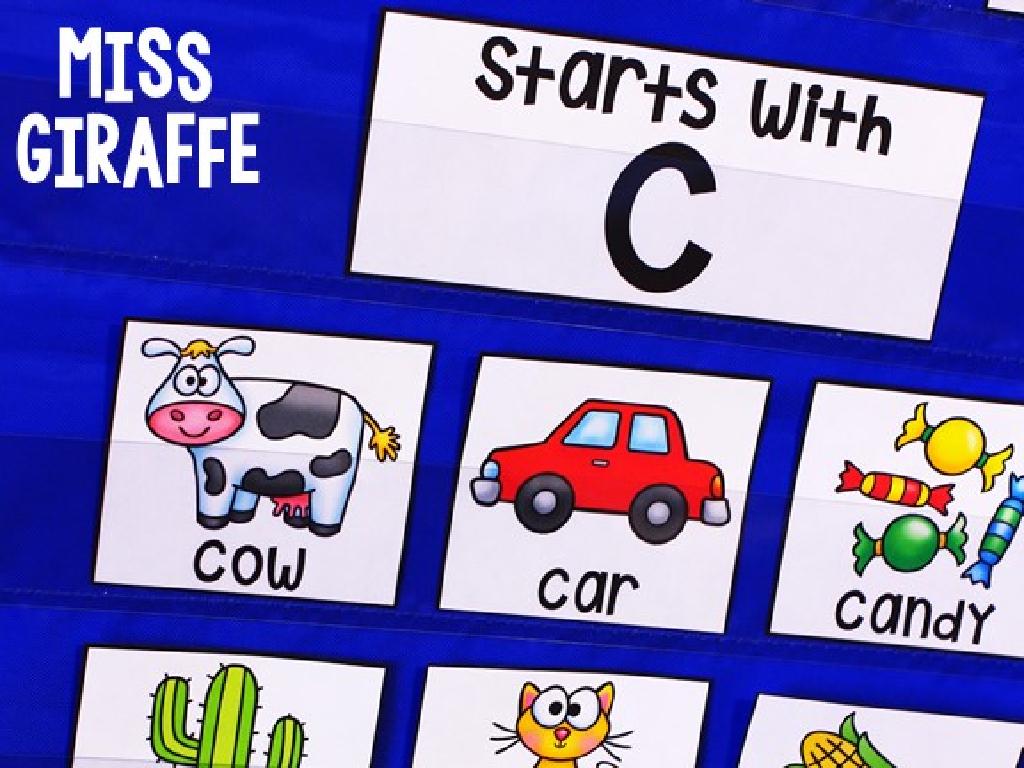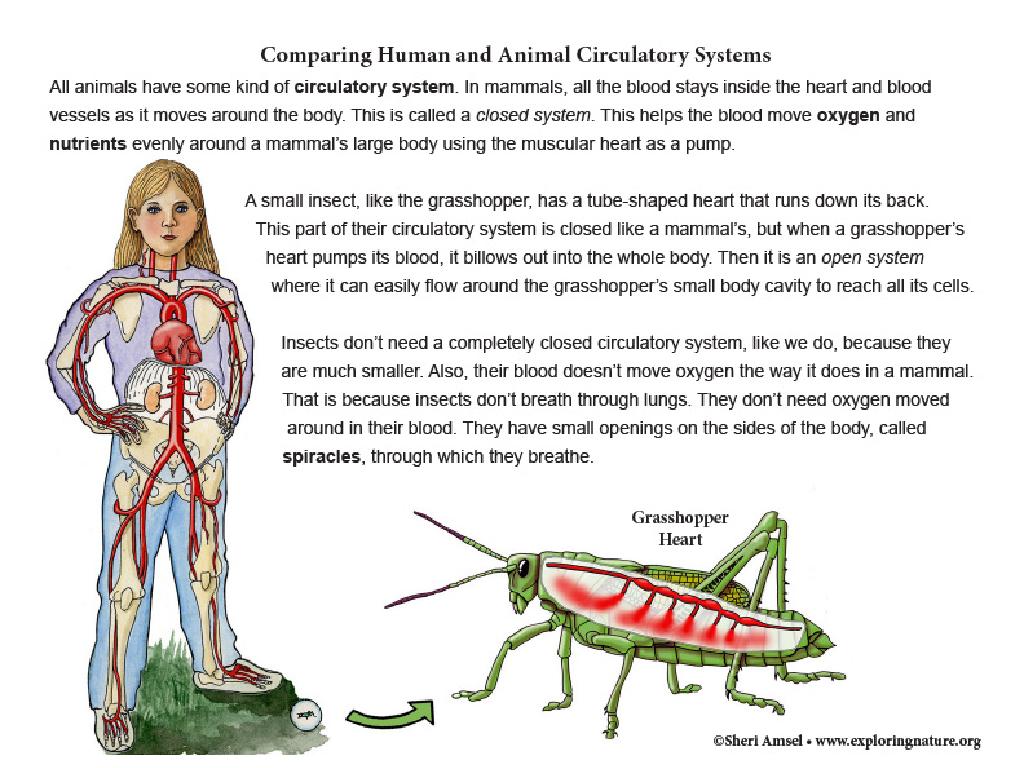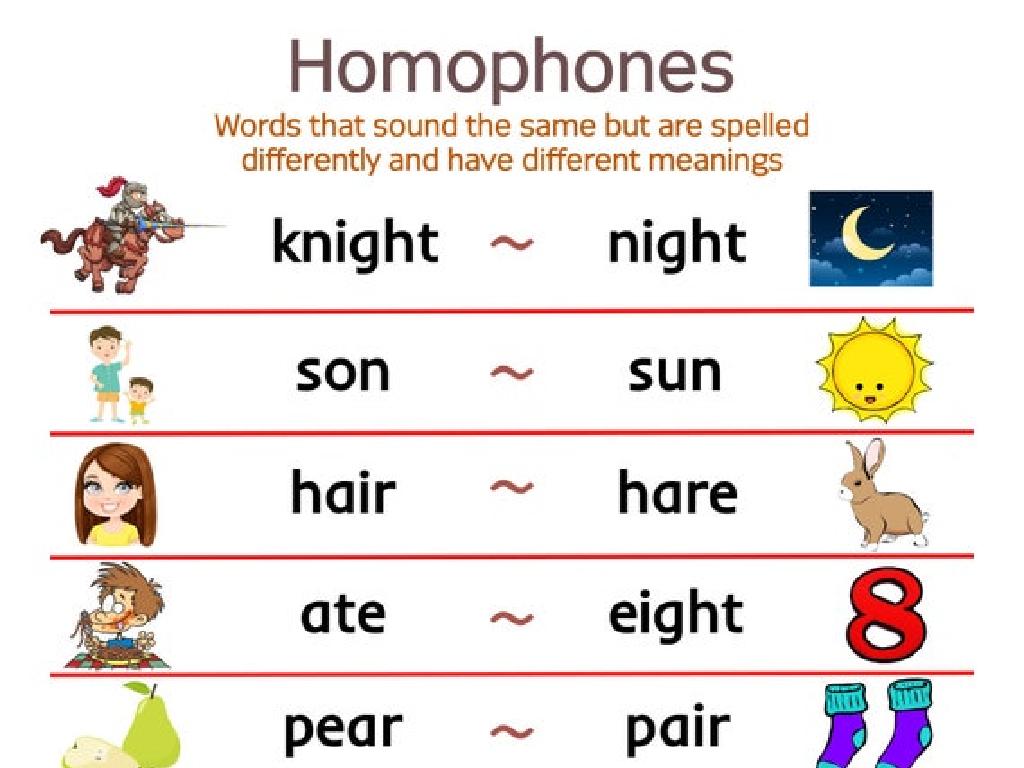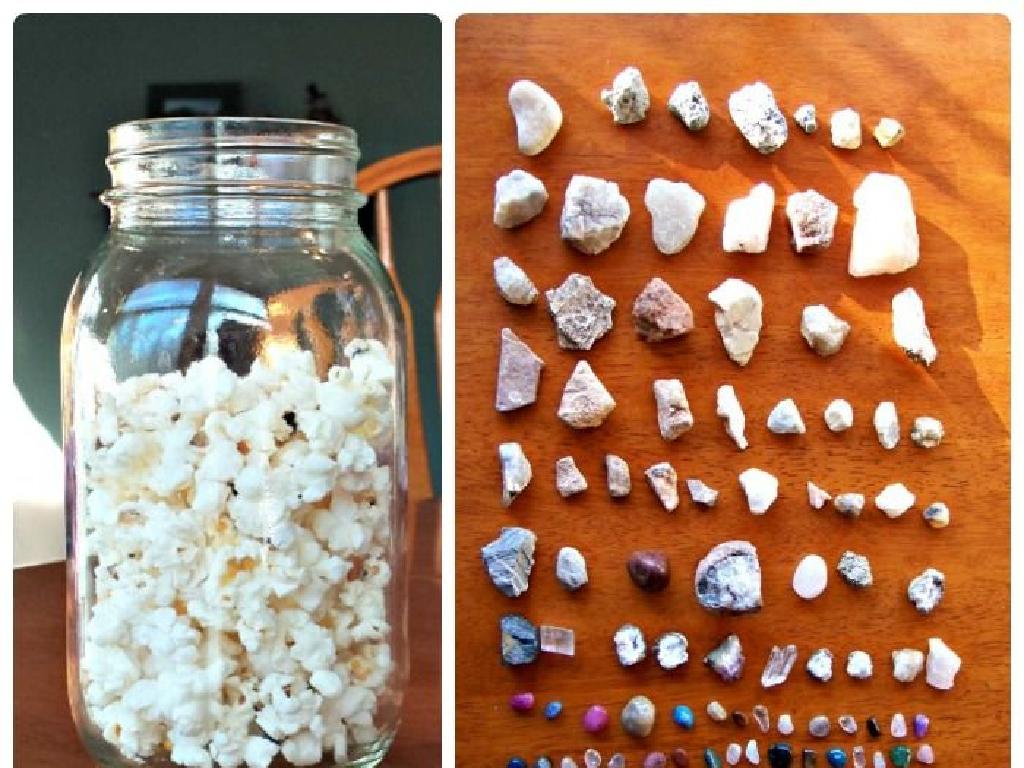Shapes Of Everyday Objects I
Subject: Math
Grade: Pre-k
Topic: Shapes In The Real World
Please LOG IN to download the presentation. Access is available to registered users only.
View More Content
Welcome to Shapes: Shape Hunt Adventure
– Greet our little shape explorers
– Today’s adventure: a shape hunt!
– We’ll look for circles, squares, and more
– Learn shapes through everyday objects
– Find shapes in items like clocks, windows, and wheels
– Fun activities to find shapes
|
Begin the class with a warm and enthusiastic greeting to capture the children’s attention. Explain that they will be going on an exciting shape hunt, which will help them identify and learn about different shapes by observing the world around them. Use common objects that children are familiar with, such as the circular clock, square windows, or the triangular slices of pizza, to illustrate the concept of shapes. Prepare a set of fun, interactive activities where children can search for and identify shapes in the classroom or in pictures of various scenes. This hands-on approach will make the learning process enjoyable and memorable for the young students.
Circle: The Round Shape Around Us
– A circle is round like a ball
– Spot round objects in the classroom
– Look around to find things shaped like circles
– Examples: Clock, coins, buttons
– Clock faces, coins in your pocket, and buttons on your shirt are all circles
|
This slide introduces the concept of a circle to Pre-K students by relating it to familiar objects. Start by explaining that a circle is a shape that is completely round, just like a ball they play with. Encourage the students to look around the classroom and identify objects that are shaped like a circle. Provide examples such as a clock on the wall, coins that they may use in a play store, or buttons on their clothes. This activity helps students recognize and connect the shape to real-world objects, reinforcing their understanding of geometric shapes in a fun and interactive way. For the activity, you can have students bring circle-shaped items from home, draw pictures of circular objects, or even have a circle scavenger hunt in the classroom.
Squares Around Us
– A square has four equal sides
– Let’s find squares in our room
– Look around to spot square objects
– Windows and tiles are square-shaped
– Many windows and floor tiles have square shapes
– Some crackers are squares too
– Snack time can be fun with square crackers
|
This slide introduces the concept of squares to Pre-K students by relating the shape to familiar objects in their environment. Start by explaining that a square is a special shape with four sides that are all the same length. Encourage the children to look around their classroom or home to find objects that are shaped like a square. Use common examples like windows, which often have a square shape, and tiles, which are used on floors and walls. Also, mention that some crackers are square, making a connection to their everyday snacks. This will help them recognize squares in different contexts. During the next class, you can have a square scavenger hunt or a snack time with square-shaped crackers to reinforce the concept.
Exploring Triangles Around Us
– A triangle has three sides
– Can you find triangles here?
– Pizza slice: A triangle shape
– Like your favorite pizza slice!
– Yield sign & hangers are triangles
– Look at road signs and in your closet!
|
This slide introduces the concept of triangles to Pre-K students by relating it to everyday objects. Start by explaining that a triangle is a shape with three straight sides. Ask the children to look around the classroom or think of things at home that might be shaped like a triangle. Show them pictures of a pizza slice, a yield traffic sign, and clothes hangers to illustrate how triangles appear in daily life. Encourage the children to draw their own triangles and find more triangle-shaped objects as a class activity. This will help them recognize and understand the shape in a fun and interactive way.
Exploring Rectangles Around Us
– A rectangle has 2 short and 2 long sides
– Let’s find rectangles in our classroom
– Doors and books are rectangles
– Look at the shape of our classroom door
– Cellphones are also rectangles
– Even some cellphones have a rectangle shape
|
This slide introduces the concept of rectangles to Pre-K students by relating it to everyday objects they are familiar with. Start by explaining that a rectangle is a shape with two pairs of sides: one pair is longer than the other. Encourage the children to look around the classroom to spot objects that have a rectangular shape, such as the door, books on the shelf, or a cellphone. This activity helps students recognize shapes in their environment, reinforcing their understanding of geometric concepts in a fun and interactive way. Make sure to walk around the room with the students, pointing out the different objects and discussing how they are rectangles. This will help them to visually and physically connect the concept of rectangles to real-world objects.
Exploring Ovals Around Us
– An oval is a squished circle
– Ovals are everywhere
– Examples: mirror, rug, faces
– Look at a mirror, notice oval rugs, and our faces
– Let’s find ovals in the classroom
– Search for oval shapes in our room
|
This slide introduces the concept of ovals to Pre-K students by relating the shape to something they are familiar with a circle that has been squished. Use everyday objects to illustrate ovals, such as mirrors, rugs, or even the shape of some faces. Encourage the children to look around their own environment, both in the classroom and at home, to find oval shapes. This activity will help them recognize and name the oval shape in various contexts, reinforcing their understanding of shapes in the real world. Make the activity interactive by having a ‘shape hunt’ in the classroom where students can point out or bring oval-shaped items to the front of the class.
Shape Hunt Adventure
– Let’s explore our classroom
– Find objects with familiar shapes
– Look for circles, squares, triangles, and more
– Match objects to the shapes we learned
– Point out each shape you find
– When you find a shape, show it to your friends
|
This slide introduces a fun and interactive ‘Shape Hunt’ activity for the students. The objective is to reinforce the recognition of shapes by finding real-world examples in the classroom. Encourage the children to explore and observe their surroundings to find objects that correspond to the shapes they have learned about, such as circles, squares, and triangles. Provide guidance on how to match objects to shapes and facilitate the activity by pointing out a few examples. Prepare to assist them in naming the shapes they find and encourage them to share their discoveries with the class. This activity not only helps with shape recognition but also enhances their observational skills and peer learning.
Shape Art Creation
– Let’s make shape art!
– Pick your favorite shapes
– Use circles, squares, triangles
– Circles for sun, squares for houses
– Add rectangles and ovals too
– Rectangles for doors, ovals for balloons
|
This activity is designed to help Pre-K students recognize and utilize shapes to create a piece of art. By choosing their favorite shapes, students will engage in a hands-on experience that reinforces their understanding of geometric figures. Encourage them to think creatively about how everyday objects can be represented using simple shapes like circles, squares, triangles, rectangles, and ovals. For example, a circle can become the sun, a square can turn into a house, and a rectangle can be a door. Provide them with various materials such as construction paper, glue, and scissors. Offer guidance and praise their creativity as they work. This activity not only teaches shapes but also promotes fine motor skills and artistic expression.
Show and Tell: Sharing Our Shape Pictures
– Present your shape artwork
– Describe the shapes you used
– Did you use circles, squares, triangles?
– Discuss where you see these shapes
– Are these shapes in your room, at the park?
– Listen to friends’ shape stories
|
This slide is for a Show and Tell activity where students will present the pictures they have created using different shapes. Encourage each child to talk about the shapes they chose and why. Ask them to identify where they see these shapes in their daily life, like a circle in a clock or a square in a window. This will help them connect classroom learning to the real world. Prepare to guide the discussion and ensure each child gets a turn. Offer praise and ask engaging questions to keep the children interested. Have a list of common shapes and objects ready to prompt discussion if needed.
Goodbye, Shapes!
– Celebrate today’s achievements
– You’re now shape detectives
– Remember, shapes are all around us!
– Hunt for shapes in daily life
– Can you find a circle, square, or triangle at home?
– Keep learning and exploring
|
This slide is meant to conclude the lesson on shapes with a positive reinforcement for the children, acknowledging their effort and encouraging them to continue observing shapes in their environment. As shape detectives, they should be excited to spot and identify shapes in different objects they encounter every day, whether at home, in the park, or on the way to school. This activity not only reinforces their learning but also helps them connect classroom knowledge with the real world. Encourage them to share the shapes they find with their family or bring their discoveries to the next class. This ongoing activity will help solidify their understanding of shapes and their properties.






